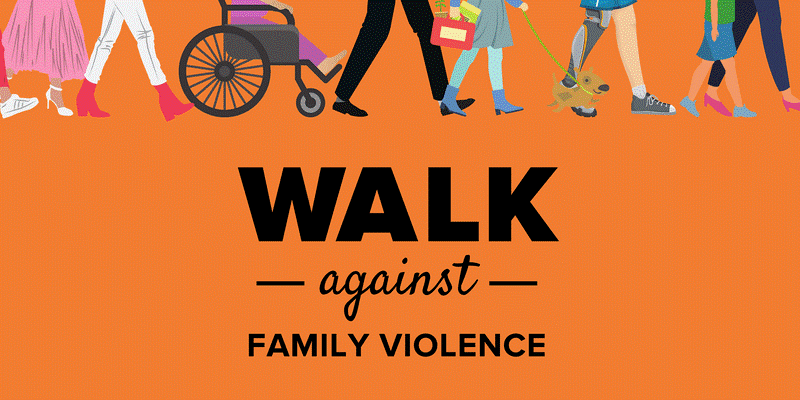16 Ways to End Gender Based Violence
November 19 2019
Guest Blog by Claire Henderson, Launch Housing Practice Leader and Children’s Support Specialist.
The 16 Days of Activism against Gender-Based Violence runs annually, and is used across the world as a platform to call for the elimination of gender based violence. The campaign starts on the 25 November, the International Day for the Elimination of Violence against Women, and ends on the 10 December, International Human Rights Day.
Launch Housing is invested in ending gender based violence, as family violence, which is one of the main forms of gender based violence, is a key driver of homelessness. Did you know that in 2017-2018, family violence was the leading cause of homelessness?
(Image: Claire Henderson, Launch Housing Practice Leader and Children’s Support Specialist )
Our staff witness the impact of family violence on a daily basis, and see how homelessness compounds the problem. Certain groups of people in Australia experience higher rates of homelessness than the rest of the population, and unsurprisingly, those groups of people also experience higher rates of family violence. These groups include LGBTIQ people, Aboriginal women, women who are culturally and linguistically diverse, women with disabilities and children.
This year, I will be marching at the Walk against Family Violence to demonstrate my commitment to end gender based violence, family violence and homelessness. Many Launch Housing staff will also be at the march to help raise awareness and support societal change. If you want to help the cause, come along to this march, and read the following 16 ways to help end gender based violence.
1.Read about one of the key drivers of gender based violence: the patriarchy
Learn about the patriarchy, power and control, and the way it affects people of all genders.
2. Learn about the other drivers of gender based violence: the ‘isms and phobias’
Along with the patriarchy, racism, homophobia, transphobia, ableism and classism help drive gender based violence. These constructs serve to keep some groups of people in power, and some groups of people oppressed. These systems of oppression are interwoven, and people who experience multiple types of oppression are more likely to experience gender based violence and homelessness.
3. Understand that gender inequality is directly related to gender based violence
It may seem like a stretch to some, but seemingly small examples of gender inequality are directly linked to gender based violence. The fact that women are paid less than men and have less superannuation than men is an example of how society values men more. This is the exact same attitude that allows men to use gender based violence. The pay and superannuation gap is also a key driver of homelessness amongst older women.
4. Get the facts about family and domestic violence
Did you know women are most likely to be assaulted by a partner or former partner? Find out more about the gendered nature of family and domestic violence, and about which groups of people in Australia are most likely to experience it.
5. Learn to recognise the signs of a violent relationship
Learn the signs for yourself and for others. The quicker you spots the signs, the quicker you can act. If you find yourself in a violent relationship, seek support in a way that works for you and your situation. If you think a friend is in trouble, try to support them if you can.
6. Discover the facts about sexual violence
Learn about sexual assault, challenge the myths, and think about why people who identify as trans or gender diverse are more likely to experience it.
7. Call out bad behavior
If you are able to, and if it’s safe to do so, call out bad behavior. Challenge your friends if they make homophobic jokes or treat women badly. If you are in a position of power, use that power for good, and remember the standard you walk past is the standard you accept.
8. Be an ally and recognise your privilege
Conversations about gender based violence tend to focus on white, affluent women. Aboriginal women, culturally and linguistically diverse women, women with disabilities, women living in poverty and LGBTIQ people tend to get left out, although they are more likely to experience gender based violence. If you are in a position of power, try to educate yourself and be an ally.
9. Examine your internal bias
Society teaches us about gender norms from birth, and everyone has internal bias relating to gender. Unfortunately, gender norms help to perpetuate gender based violence. Take some time to think about your internal bias. Do you have a tendency to think that women in senior management roles are hostile and cold? Do you think men are braver than women? If you uncover something, try to challenge yourself by talking it over with friends or doing your own research.
10. Listen to survivors of gender based violence
One of the most powerful things you can do to end gender based violence is to listen to people who have experienced it. Believe your colleagues when they tell you they were cat called on the way to work. Believe your friend when she tells you she was sexually assaulted. Believe the celebrity who goes public with an allegation of sexual violence.
11. Observe how the media perpetuates gender based violence
Examine how the media represents different genders, and how some outlets can perpetuate gender based violence. Go a step further and look at how the media perpetuates homophobia and racism, and think about the intersection between ethnicity, gender identity, sexuality and gender based violence and homelessness.
12. Don’t fund companies that perpetuate gender inequality
Once you learn how some media outlets perpetuate gender based violence and gender inequality, you will start to see a slew of advertising from companies that do the same. Money talks, so send a message by boycotting products from companies that use sexist tropes.
13. Support children to break free of gender norms
Children are taught to conform to gender norms from the moment they are born. Little girls play with dolls and are taught to be kind and caring. Little boys play with trucks and are taught to be brave and strong. If you have a child in your life, support them to express themselves in a way that suits them. Let boys show their emotions, and girls express their anger. Let children sit outside the binary, and choose what gender, if any, they want to be.
14. Encourage women and people of diverse genders
Encourage women and people of diverse genders to achieve and succeed. Society has taught women and people of diverse genders to go quietly and not make waves, but that doesn’t have to be the case. If you see someone doing something awesome at work or in the community, give them the recognition they deserve, buy their work, and if you are in a position of power, help them go further.
15. Stay up to date
Stay up to date with news about gender based violence. There are new movements, campaigns and thinkers emerging daily. Talk about these things with friends and family. Spread the word and spread the awareness.
16. Donate your time
If you can, attend events that aim to bring attention to gender based violence. Melbourne hosts a plethora of film festivals, symposiums, book launches, vigils and marches, so get involved!
Register for the Walk against Family Violence.




